By using our website, you agree to the use of cookies as described in our Cookie Policy
GM Security Relearn Procedure
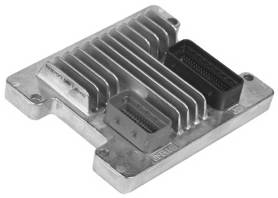
GM Vehicle Theft Deterrent (VTD) Relearn Procedures
GM vehicles have three types of Vehicle Thief Deterrent (VTD) systems, each requiring their own set of relearn procedures. Unless these procedures are correctly performed the vehicle will not start after the PCM has been replaced. The three systems are:
Vehicle Anti-Theft System (VATS), Passkey, & Passkey II – resistive chip ignition key
Passlock – coded lock cylinder
Passkey III – transponder ignition key
How do you know what system your vehicle has? Just look at the keys (see page 4). The sections that follow will help you identify the system and describe how to do the relearn.
VATS, Passkey, & Passkey II – resistive chip ignition key
Vehicle Anti-Theft System (VATS) – VATS has a separate module called the Theft Deterrent Module (TDM) that validates the resistive chip in the ignition key. If the resistance value read by the TDM is what the TDM is expecting, the TDM will send a signal to the PCM informing the PCM that a valid key is present and the PCM may start the vehicle. No relearn is required on a VATS equipped vehicle when replacing the PCM.
Passkey – The Passkey system has a separate module called the Theft Deterrent Module (TDM) that validates the resistive chip in the ignition key. If the resistance value read by the TDM is what the TDM is expecting, the TDM will send a signal to the PCM informing the PCM that a valid key is present and the PCM may start the vehicle. No relearn is required on a Passkey equipped vehicle when replacing the PCM.
Passkey II – The Passkey II system has the Theft Deterrent Module (TDM) function stored in the Body Control Module (BCM). The TDM portion of the BCM will validate the resistive chip in the ignition key. If resistance value read by the BCM is what the BCM is expecting, the BCM will send a message over serial data to the PCM informing the PCM that a valid key is present and the PCM may start the vehicle.
To perform a relearn on a Passkey II system, make sure there is a fully charged battery in the vehicle. The battery will be used for 30 minutes without the alternator available for charging. Connect a battery charger to the battery to ensure power is available while programming. Both the BCM and PCM must be working and communicating with each other.
- Insert ignition key and turn to the “ON” position. Do not attempt to start the engine. Leavethe key in the “ON” position for approximately 11 minutes. The security light will be steadyon or flashing for the 11-minute period. Do not proceed to Step 2 until the security lightturns off or stops flashing.
- Turn the ignition switch to the “OFF” position for 30 seconds.
- Turn the ignition switch to the “ON” position as in Step 1 for 11 minutes.
- Turn the ignition switch to the “OFF” position for 30 seconds.
- Turn the ignition switch to the “ON” position as in Step 1 for 11 minutes for a third time.
- Turn the ignition switch to the “OFF” position for 30 seconds for a third time.
- Turn the ignition switch to the “ON” position for 30 seconds.
- Turn the ignition switch to the “OFF” position.
- Attempt to start the engine.
If the engine starts and runs, the relearn is complete.
Passlock – coded lock cylinder
The Passlock anti-theft system requires the presence of a key in the lock cylinder to enable starting. The lock cylinder contains a stationary Hall effect sensor and a rotating magnet. When the key is turned in the lock cylinder, the magnet creates a signal on the Hall effect sensor. The cylinder then sends a coded signal to the instrument panel cluster (IPC) or body control module BCM. If the IPC/BCM receives the expected coded signal, the IPC/BCM will send a message over serial data to inform the PCM that the vehicle may be started.
To perform a relearn on a Passlock system, make sure there is a fully charged battery in the vehicle. The battery will be used for 30 minutes without the alternator available for charging. Connect a battery charger to the battery to ensure power is available while programming.
Both the IPC/BCM and PCM must be working and communicating with each other.
- Turn ignition on.
- Attempt to start the engine, and then release the key to the “ON” position.
- Observe the “SECURITY” indicator light. After 10 minutes the “SECURITY” indicator lightwill turn off.
- Turn ignition to the “OFF” position, and wait 10 seconds.
- Attempt to start the engine, and then release the key to the “ON” position.
- Observe the “SECURITY” indicator light. After 10 minutes the “SECURITY” indicator lightwill turn off.
- Turn ignition to the “OFF” position, and wait 10 seconds.
- Attempt to start the engine, and then release the key to the “ON” position.
- Observe the “SECURITY” indicator light. After 10 minutes the “SECURITY” indicator lightwill turn off.
- Turn ignition to the “OFF” position, and wait 10 seconds.
- Vehicle has now learned the new password. Start the engine.
- With a scan tool, clear any trouble codes.
NOTE: For most cars, one 10-minute cycle will be enough for the vehicle to learn the new password. Perform all 3 cycles if the car will not start after 1 cycle. Most trucks will require all 3 cycles for learning the password.
Passkey III – transponder ignition key
The Passkey III anti-theft system uses a transponder inside the head of the ignition key. The exciter inside the ignition lock cylinder energizes this transponder when the ignition switch is turned on. The transponder transmits a unique signature to the theft deterrent control module. If the key signature transmitted is acceptable to the theft deterrent control module, the theft deterrent control module will transmit fuel enable password to the PCM. If the fuel enable password is correct, the PCM will start the vehicle.
To perform a relearn on a Passkey III system, make sure there is a fully charged battery in the vehicle. The battery will be used for 30 minutes without the alternator available for charging. Connect a battery charger to the battery to ensure power is available while programming. When performing this relearn, all previously learned keys will be erased. Additional keys may be relearned immediately after the first key has been learned by inserting the additional key and turning the ignition switch to on within 10 seconds of removing the previously learned key.
- Insert a master key (black head) into the ignition switch.
- Turn key to the “ON” position without starting the engine. Security light should turn on andstay on.
- Wait for 10 minutes or until the security light turns off.
- Turn key to the “OFF” position for 5 seconds.
- Turn key to the “ON” position without starting the engine. Security light should turn on andstay on.
- Wait for 10 minutes or until the security light turns off.
- Turn key to the “OFF” position for 5 seconds.
- Turn key to the “ON” position without starting the engine. Security light should turn on andstay on.
- Wait for 10 minutes or until the security light turns off.
- Turn key to the “OFF” position. The key transponder information will be learned on the nextstart cycle.
- Start the vehicle. If the vehicle starts and runs normally, the relearn is complete. If additionalkeys need to be relearned:
- Turn the key to the “OFF” position.
- Insert the next key to be learned. Turn the key to the “ON” position within 10 seconds ofremoving the previously used key.
- Wait for security light to turn off. It should happen fairly quickly. You may not notice thelamp, as the transponder value will be learned immediately
- Repeat steps 12 through 14 for any additional keys.
How to tell which system you have – Look at the keys. VATS is not shown, but very similar to Passkey and Passkey II.
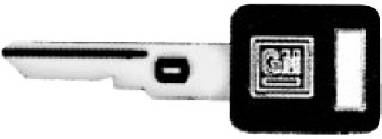 Passkey, Passkey II (PK2)
Passkey, Passkey II (PK2)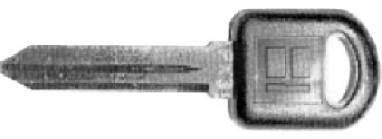 Passkey III (PK3), III+ (PK3+)
Passkey III (PK3), III+ (PK3+)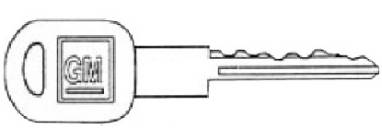 Passklock
Passklock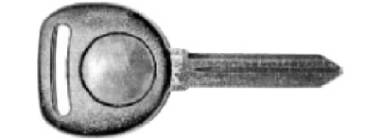 Passkey III (PK3), III+ (PK3+)
Passkey III (PK3), III+ (PK3+)
NOTE: IF the theft deterrent relearn procedure does not work, please try the procedure again, before calling Technical Services.
GM Crankshaft Position Sensor Relearn
The PCM needs to learn the variability of the Crankshaft Position Sensor to better detect misfire conditions. Whenever the PCM is replaced, the Crankshaft Position Sensor Relearn procedure needs to be completed. The Crankshaft Position Sensor Relearn procedure requires the use of a scan tool that has this feature equipped. The scan tool will walk the installer through the procedure. Some of the steps to be expected are:
- Block drive wheels
- Apply parking brakes
- Cycling ignition on and off
- Apply and hold brake pedal. Note: Some applications will be instructed NOT to hold brakepedal. Follow instructions on scan tool.
- Start engine
- Turn off A/C
- Place transmission in Park (automatic) or Neutral (manual)
- Increase engine RPM to value indicated on scan tool
- Release throttle when fuel cut-off occurs or if RPM value is exceeded.
These are example steps, and not in any order. This information can also be found in ProTech 70-77-0003.







